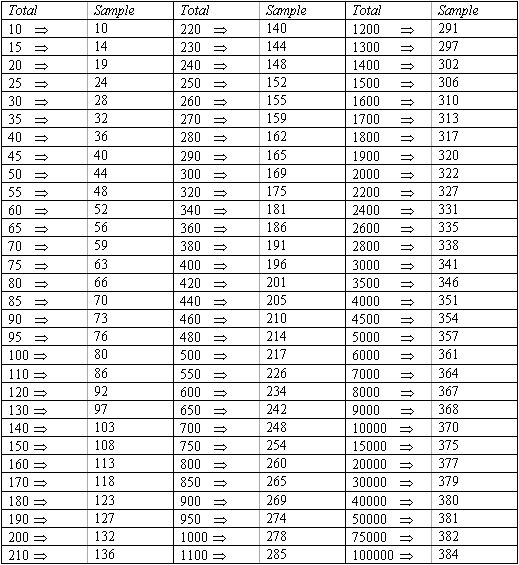
| Use the following chart to determine the number of subjects needed to complete the OLA based on the total number in the organization or sub-unit. If this level of “Critical Mass” is reached, then the OLA report can be considered a fair representation of an adequate description of organizational perception. In addition to reaching this “critical mass” for the total organization you also will want to make sure that there is a fair distribution between the various sub-units of the organization. This allows you to have the broad representation you are seeking. In seeking to avoid sampling bias work through the following questions: |
| |
| Find your total organization number on the left column and match it to the recommended sample size to confirm your critical mass number. | |

“Table for determining needed size S of a randomly chosen sample from a given finite population of N cases such that the sample proportion p will be within ± .05 of the population proportion P with a 95 percent level of confidence”
– Krejcie, R.V., & Morgan, D.W. (1970). Determining sample size for research activities. Educational and Psychological Measurement, 30, 607-610.